$ (document).ready(function() { SampleGalleryV2({“containerId”:”embeddedSampleGallery_3973259856″,”galleryId”:”3973259856″,”isEmbeddedWidget”:true,”selectedImageIndex”:0,”isMobile”:false}) });
Fujifilm isn’t being conservative with its new X-T3 enthusiast mirrorless camera. Rather, the company is swinging for the fences, producing a camera with a brand new 26MP BSI X-Trans CMOS 4 sensor that can shoot at up to 30 fps (in crop mode) and capture 4K/60p video. The T3’s X-Processor 4 is three times faster than the chip on current X-series models. The camera also has a native base ISO of 160, down from 200 on the X-T2. All of Fujifilm’s Film Simulation modes are here, including Acros, Classic Chrome and Eterna.
The autofocus system is a big improvement over previous X-series models
Design-wise, the X-T3 looks a whole lot like its immediate predecessor. You’ve got your weather-sealed body with analog dials, unique dual-axis articulating LCD and good-sized electronic viewfinder. Both the LCD and EVF have been enhanced, with the former becoming touch-enabled and the latter getting a resolution boost to 3.69 million dots. The EVF has a 100 fps refresh rate when the camera is in ‘boost mode,’ which no longer requires the optional battery grip for maximum performance. The EVF diopter is now lockable, and the camera’s various dials and buttons are larger and have a more pronounced ‘press feel’.
Perhaps the biggest surprise on the X-T3 is just how much effort Fujifilm has put into making the X-T3 a serious video camera
The autofocus system is a big improvement over previous X-series models, with 2.1 million phase detection pixels providing nearly 100% coverage. The system checks focus and metering 1.5x faster than the X-T2 and is capable of focusing in light levels as low as -3EV. Face and eye detection have been improved, with the latter now available in AF-C mode. Fujifilm has also added a ‘Digital Microprism’ focusing aid, simulating the view through an old-school film SLR finder.
At full resolution the camera can fire away at 20 fps with the electronic shutter or 11 fps with the mechanical shutter. Putting the camera into ‘Sports Finder’ boosts the top burst rate to 30 fps with a 1.25x crop. Bright lines in the viewfinder show the cropped-in area. An available pre-capture option continuously buffers images and saves the images taken immediately before and after you press the shutter release. The X-T3’s battery life is rated at 390 shots per charge, which is above average for a mirrorless camera. The optional battery grip allows the camera to use three NP-W126S packs, with seamless switching between them.
The X-T3 can record F-Log footage with HLG support coming later in 2018.
Perhaps the biggest surprise on the X-T3 is just how much effort Fujifilm has put into making the X-T3 a serious video camera. Not only can it capture 4K/60p video (DCI and UHD): it can also output 10-bit 4:2:2 to an external recorder or capture 10-bit 4:2:0 internally (using the H.265 codec). The readout rate of the sensor has been increased to reduce rolling shutter, and new noise reduction algorithms have been added.
The X-T3 can record F-Log footage (with a minimum ISO of 640), with HLG support coming later in 2018. The camera has mic and headphone sockets, along with HDMI and USB-C, and the door over all of those can be removed for when the camera is on a rig.
The X-T3 will be available starting September 20th in black and silver for $ 1,499.95 body-only, or as a kit with the XF 18-55mm for $ 1,899.95.
Read our Fujifilm X-T3 First Impressions Review
Press Release:
FUJIFILM ANNOUNCES THE NEW X-T3, A MIRRORLESS DIGITAL CAMERA EVOLVING X SERIES INTO FOURTH GENERATION
New X-T3 introduces all-new back-illuminated 26MP X-Trans CMOS 4 sensor and X-Processor 4 processor; World’s first APS-C mirrorless camera capable of 4K/60P 10bit recording
Valhalla, N.Y., September 6, 2018 – FUJIFILM North America Corporation today unveiled the new FUJIFILM X-T3, launching the X Series mirrorless digital cameras into its fourth generation. Introducing an all-new back-illuminated 26.1MP X-Trans CMOS 4 sensor and X-Processor 4 processor, the X-T3 delivers superb image quality, dramatically improved AF performance, exceptional tracking performance of fast-moving subjects and blackout-free burst shooting. The X-T3 is also the first APS-C mirrorless camera capable of 4K/60P 10bit recording to meet the needs of professional videographers.
“We are proud to introduce the new X-T3 to market as not only the latest addition to our X Series mirrorless lineup of digital cameras, but as an introduction to fourth generation technologies that feature substantial performance enhancements over previous models, delivering high AF performance, superb color reproduction and outstanding image quality to photographers and videographers alike,“ said Yuji Igarashi, General Manager of the Electronic Imaging Division and Optical Devices Division of FUJIFILM North America Corporation.
Fourth Generation X-Trans CMOS 4 and X-Processor 4 for Improved Resolving Performance, Color Reproducibility, and Faster Processing
Featuring the latest, fourth generation 26.1MP X-Trans CMOS 4 APS-C sensor with no optical low-pass filter, the FUJIFILM X-T3 boasts the highest performance in the history of X Series. Utilizing the unique color filter array of X-Trans CMOS sensors to control moiré and false colors, it is the first APS-C back-illuminated structure sensor with phase detection pixels distributed across the surface to improve image resolution without compromising signal to noise ratio. With the X-T3, ISO160 is now part of the standard ISO range, previously this was only available as extended ISO, perfect for use in bright scenes or when trying to shoot wide open with a fast, large-aperture lens.
The new X-T3 debuts the X-Processor 4 processor which features a Quad Core CPU to achieve a processing speed 3 times faster than current X Series models. Providing incredible AF accuracy and speed, the processor is also the first to deliver 4K/60P 10bit output, fulfilling the performance needs of professional videographers. It is also capable of implementing complex image processing tasks in an instant, such as the unique FUJIFILM Color Chrome Effect or Monochrome Adjustment function.
The new FUJIFILM X-T3 features the Color Chrome Effect, previously limited to the FUJIFILM GFX 50S medium format mirrorless digital camera, which produces enhanced color gradation in highly saturated colors such as vivid-colored flowers with shadows, a notoriously difficult subject to reproduce. With the high-speed processing power of the X-Processor 4, this effect can be applied not only to a single shot but also during continuous shooting.
Exceptional Autofocus and Viewfinder Performance
With the X-T3, AF performance receives a dramatic improvement from previous X Series products, increasing the phase detection AF area to the entire frame with 2.16M phase detection pixels providing fast and accurate phase detection AF. The low-light phase detection AF limit has been increased over the X-T2 by 2 stops, from -1EV to -3EV, making it possible for photographers to accurately focus in low light conditions, perfect for night photography.
Furthermore, the X-Processor 4’s high processing speed and excellent phase detection algorithm means the camera refocuses (AF) and meters (AE) 1.5 times more frequently than the X-T2, enabling accurate autofocus even when photographing subjects that change speed and move erratically across the frame, such as sports photography. The performance of Face Detection AF has also been improved. Eye Detection AF now supports the AF-C mode to maintain accurate focus tracking. Face and Eye Detection AF is also available during video recording to achieve smooth filming of subjects.
The X-T3 offers photographers incredible viewfinder performance, with the ability to now track a moving subject in the 3.69-million-dot high resolution EVF with a magnification ratio of 0.75x. Further the X-T3, allows continuous shooting of 11fps with the mechanical shutter without the optional vertical battery grip, enabling fast continuous shooting while maintaining a low weight.
Additional enhancements to the X-T3 include a display time lag of just 0.005 seconds and a EVF refresh rate of 100fps for smooth display of moving subject or when panning the camera. A new sports finder mode for enhanced capture of moving subjects is especially useful for sports and wildlife photography, and a new pre-shoot function, which allows photographers to start shooting as soon as the shutter button is half-pressed to ensure the moment is never missed.
Enhanced Video Performance to Meet the Needs of Professionals
The X-T3 is the first mirrorless digital camera capable of internal SD card 4K/60P 4:2:0 10bit recording and the first mirrorless digital camera with APS-C or larger sensor that is capable of 4K/60P 4:2:2 10bit HDMI output. Supported video formats include the widely-used H.264/MPEG-4 AVC as well as H.265/HEVC for greater data compression, which enables internal recording of 4K/60P 4:2:0 10bit at200Mbps bitrate as well as simultaneous HDMI output. The X-T3 sensor’s read speed has been increased from that of the X-T2, enabling17msec reading in 4K/60P video, reducing rolling shutter distortion for smooth recording of fast-moving subjects. 10bit color depth for video boosts the amount of color information 64 times compared to 8bit, and is combined with approximately. 12 stops dynamic range to enable capture of subjects with rich gradation of color.
Also introduced in the X-T3 is a new noise reduction algorithm and 4K inter-frame noise reduction, the minimum sensitivity for shooting F-Log footage has been lowered from ISO800 to ISO640, further enhancing the camera’s performance to meet the needs of videographers.
Designed for Ultimate Operability
Inheriting the popular design of the X-T2, dials are positioned on the top panel, and the camera features a central viewfinder and excellent grip design for stability and comfort. The X-T3 also incorporates enhancements to its design, including a lockable EVF diopter adjustment to prevent unintended adjustments while carrying the camera, and a touchscreen panel with higher contrast, wider viewing angles and better functionality for more intuitive operation. In addition, the X-T3 offers larger top-panel dials than the X-T2, and larger rear-panel buttons and a more pronounced press function of the front and rear command dials, as found on the X-H1.
X-T3 Vertical Battery Grip
The Vertical Battery Grip VG-XT3 is designed to be dust-resistant, weather-resistant and capable of operating at temperatures as low as -10°C/14° F, and holds two additional batteries to increase the maximum number of shots to 1,100 (in normal mode). The grip features a shutter release button, focus lever, AE-L button, AF-L button, front and rear command dials, Q button and Fn button to provide the same level of excellent operability with vertical shooting as with horizontal.
X-T3 Metal Hand Grip
The MHG-XT3 Metal Hand Grip makes it substantially more comfortable to hold the camera when it is mounted with a large-aperture lens, in order to reduce camera shake. The battery or SD cards can be replaced without having to remove the hand grip, and the base can be used as a quick release shoe when using a dovetail mount on a tripod.
FUJIFILM X-T3 Key Features:
- 26.1MP X-Trans CMOS 4 Sensor with primary color filter
- X-Processor 4 Image Processing Engine
- Capable of 4K/60P and 10bit output
- Features 4 CPU units
- Startup time of 0.3 seconds
- Shutter time lag of 0.045 seconds
- High-precision, 0.5-inch, 3.69 million dot OLED color viewfinder
- Viewfinder magnification of 0.75x
- Wide viewing angle (diagonal 38º and horizontal 30º)
- Display time lag of just 0.005 seconds, refresh rate of approx. 100fps
- Robust magnesium alloy body
- Continuous Shooting
- 30fps [Only electronic shutter, 1.25 x Crop ] (JPEG? 60 frames Lossless compression RAW? 35 frames Uncompressed RAW? 33 frames)
- 11fps (JPEG: 145 frames Lossless compression RAW: 42 frames Uncompressed RAW: 36 frames)
- 5.7fps (JPEG: endless Lossless Compression RAW: 62 frames Uncompressed RAW: 43 frames)
- Pre-shot: Approx. 30fps [Only electronic shutter, 1.25 x Crop ] (max. 20 frames while half press, max. 20 frames after full press, total max. 40 frames)
- Movie Recording (using a card with the UHS Speed Class 3 or higher)
- File format
- MOV (MPEG-4 AVC/H.264, HEVC/H.265, Audio: Linear PCM / Stereo sound 24bit / 48KHz sampling)
- Movie compression
- All Intra/Long-GOP, can be used with the following settings:
- DCI4K/4K 29.97p/25p/24p/23.98p 400Mbps
- Full HD?2048×1080?/Full HD?1920×1080?94p/50p/29.97p/25p/24p/23.98p?200Mbps
- File size/ Frame Rate/ Recording Time
- ?DCI 4K?4096×2160?? 94p/50p/29.97p/25p/24p/23.98p 400Mbps/200Mbps/100Mbps 59.94p/50p: up to approx. 20min. 29.97p/25p/24p/23.98p: up to approx. 30min
- ?4K?3840×2160??94p/50p/29.97p/25p/24p/23.98p
- 400Mbps/200Mbps/100Mbps 59.94p/50p: up to approx. 20min. 29.97p/25p/24p/23.98p: up to approx. 30min
- ?Full HD?2048 ×1080?? 94p/50p/29.97p/25p/24p/23.98p 200Mbps/100Mbps/50Mbps up to approx. 30min.
- ?Full HD?1920×1080??94p/50p/29.97p/25p/24p/23.98p 200Mbps/100Mbps/50Mbps up to approx. 30min.
- ?Full HD?1920×1080) High speed rec.] 120p?100p 200Mbps (recording) up to approx. 6min.
- Recording movies in 400Mbps can be done with DCI4K/4K 29.97p/25p/24p/23.98p.
- DCI4K 59.94p/50p is not available when H.264 is selected.
- For recording movies, use a SD memory card with UHS Speed Class 3 or higher. For recording movies in 400Mbps, use a SD memory card with Video Speed Class 60 or higher
- LCD Monitor
- 0 inch, aspect ratio 3:2, approx. 1.04 million dots touch screen color LCD monitor (approx. 100% coverage)
- 16 Film Simulation Modes
- PROVIA/Standard, Velvia/Vivid, ASTIA/Soft, Classic Chrome, PRO Neg. Hi, PRO Neg. Std, Black & White, Black & White +Ye Filter, Black & White +R Filter, Black & White +G Filter, Sepia, ACROS, ACROS +Ye Filter, ACROS+R Filter, ACROS+G Filter, ETERNA/Cinema), B & W Adjustment: -9~+9
- Bluetooth® Ver. 4.2 low energy technology
- 16 Film Simulation Modes
- Accessories included:
- Li-ion battery NP-W126S
- Battery charger BC-W126S
- Shoe-mount flash unit EF-X8
- Shoulder strap
- Body cap
- Strap clip
- Protective cover
- Clip attaching tool
- Hot shoe cover
- Vertical battery grip connector cover
- Connector cover (detachable)
- Sync terminal cover
- Cable protector
- Owner’s manual
FUJIFILM X-T3 Accessories:
- X-T3 Vertical Power Booster Grip VG-XT3
- Weather-resistant design fits two additional batteries
- X-T3 Metal Hand Grip MHG-XT3
- Enhanced ergonomic design for horizontal shooting
- X-T3 Bottom Leather Case BLC-XT3
- X-T3 Cover Kit CVR-XT3 includes:
- Sync terminal cover
- Hot shoe cover
- Connector cover
- Vertical battery grip connector cover, black
- Vertical battery grip connector cover, silver
- FUJIFILM Remote Release RR-100
- Battery Charger BC-W126S
Fujifilm X-T3 specifications
| Price |
| MSRP |
$ 1499 (body only), $ 1899 (w/18-55mm lens) |
| Body type |
| Body type |
SLR-style mirrorless |
| Body material |
Magnesium alloy |
| Sensor |
| Max resolution |
6240 x 4160 |
| Other resolutions |
4416 x 2944, 3120 x 2080 |
| Image ratio w:h |
1:1, 3:2, 16:9 |
| Effective pixels |
26 megapixels |
| Sensor size |
APS-C (23.5 x 15.6 mm) |
| Sensor type |
BSI-CMOS |
| Processor |
X-Processor 4 |
| Color space |
sRGB, Adobe RGB |
| Color filter array |
X-Trans |
| Image |
| ISO |
Auto, 160-12800 (expands to 80-51200) |
| Boosted ISO (minimum) |
80 |
| Boosted ISO (maximum) |
51200 |
| White balance presets |
7 |
| Custom white balance |
Yes (3 slots) |
| Image stabilization |
No |
| Uncompressed format |
RAW |
| JPEG quality levels |
Fine, normal |
| File format |
- JPEG (Exif v2.3)
- Raw (14-bit RAF)
|
| Optics & Focus |
| Autofocus |
- Contrast Detect (sensor)
- Phase Detect
- Multi-area
- Center
- Selective single-point
- Tracking
- Single
- Continuous
- Touch
- Face Detection
- Live View
|
| Autofocus assist lamp |
Yes |
| Manual focus |
Yes |
| Number of focus points |
425 |
| Lens mount |
Fujifilm X |
| Focal length multiplier |
1.5× |
| Screen / viewfinder |
| Articulated LCD |
Tilting |
| Screen size |
3″ |
| Screen dots |
1,040,000 |
| Touch screen |
Yes |
| Screen type |
TFT LCD |
| Live view |
Yes |
| Viewfinder type |
Electronic |
| Viewfinder coverage |
100% |
| Viewfinder magnification |
0.75× (0.5× 35mm equiv.) |
| Viewfinder resolution |
3,690,000 |
| Photography features |
| Minimum shutter speed |
30 sec |
| Maximum shutter speed |
1/8000 sec |
| Maximum shutter speed (electronic) |
1/32000 sec |
| Exposure modes |
- Program
- Shutter priority
- Aperture priority
- Manual
|
| Built-in flash |
No |
| External flash |
Yes (via hot shoe or flash sync port) |
| Flash X sync speed |
1/250 sec |
| Drive modes |
- Single
- Continuous (L/H)
- Bracketing
|
| Continuous drive |
20.0 fps |
| Self-timer |
Yes |
| Metering modes |
- Multi
- Center-weighted
- Average
- Spot
|
| Exposure compensation |
±5 (at 1/3 EV steps) |
| AE Bracketing |
±5 (2, 3, 5, 7 frames at 1/3 EV, 2/3 EV, 1 EV, 2 EV steps) |
| WB Bracketing |
Yes |
| Videography features |
| Format |
MPEG-4, H.264, H.265 |
| Microphone |
Stereo |
| Speaker |
Mono |
| Connectivity |
| USB |
USB 3.1 Gen 1 (5 GBit/sec) |
| USB charging |
Yes |
| HDMI |
Yes (micro-HDMI) |
| Microphone port |
Yes |
| Headphone port |
Yes |
| Wireless |
Built-In |
| Wireless notes |
802.11b/g/n + Bluetooth 4.2 LE |
| Remote control |
Yes (via smartphone or cable release) |
| Physical |
| Environmentally sealed |
Yes |
| Battery |
Battery Pack |
| Battery description |
NP-W126S lithium-ion battery & charger |
| Battery Life (CIPA) |
390 |
| Weight (inc. batteries) |
539 g (1.19 lb / 19.01 oz) |
| Dimensions |
133 x 93 x 59 mm (5.24 x 3.66 x 2.32″) |
| Other features |
| Orientation sensor |
Yes |
| Timelapse recording |
Yes |
| GPS |
None |
Articles: Digital Photography Review (dpreview.com)

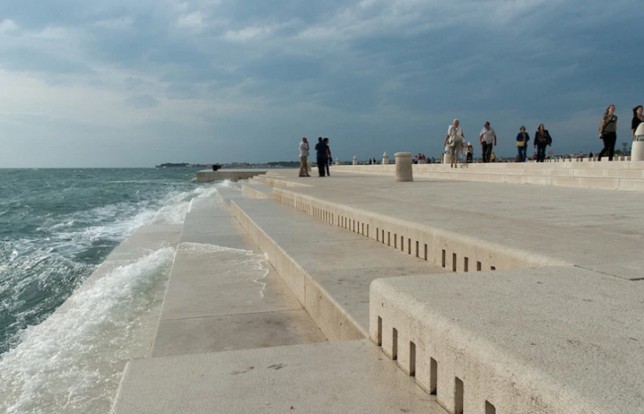
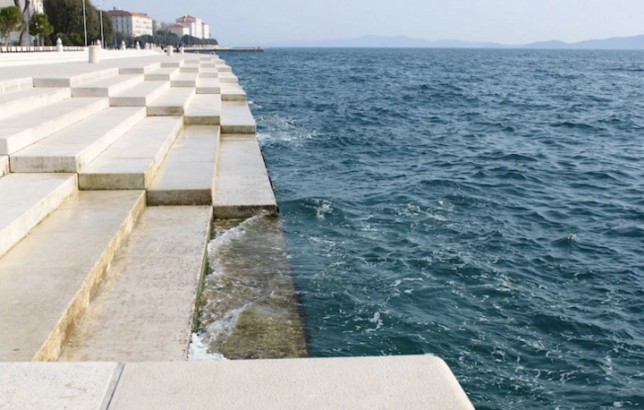
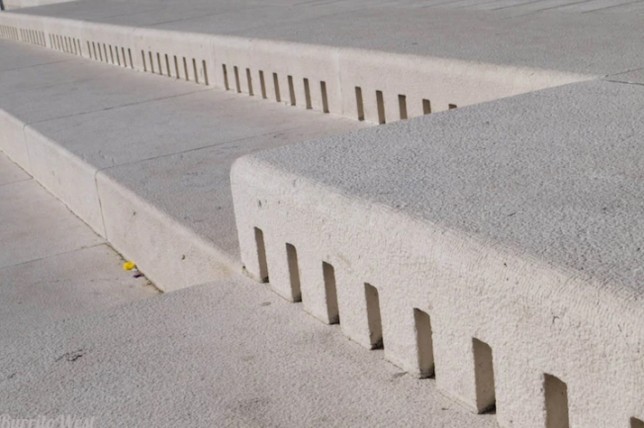







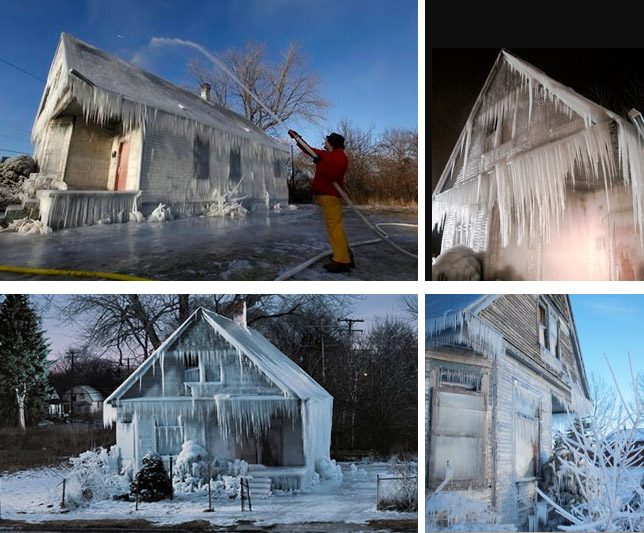





















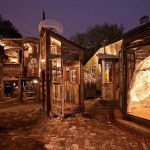
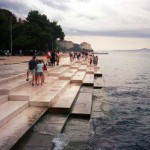
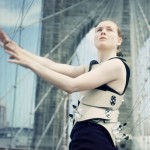




You must be logged in to post a comment.